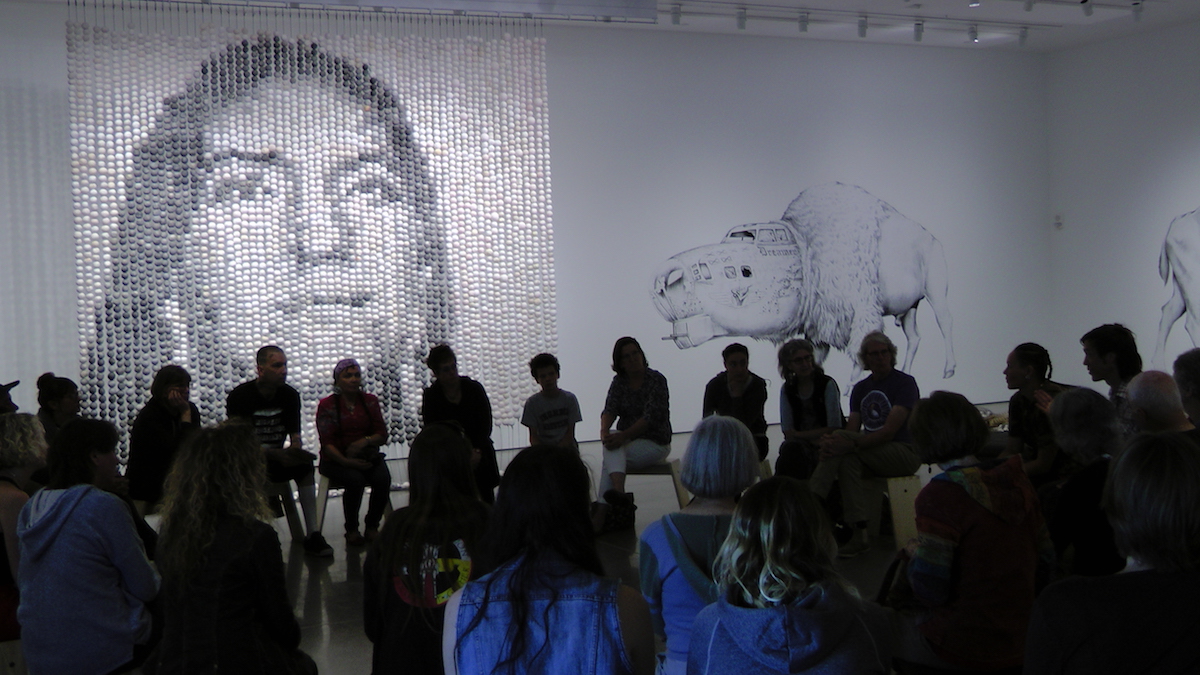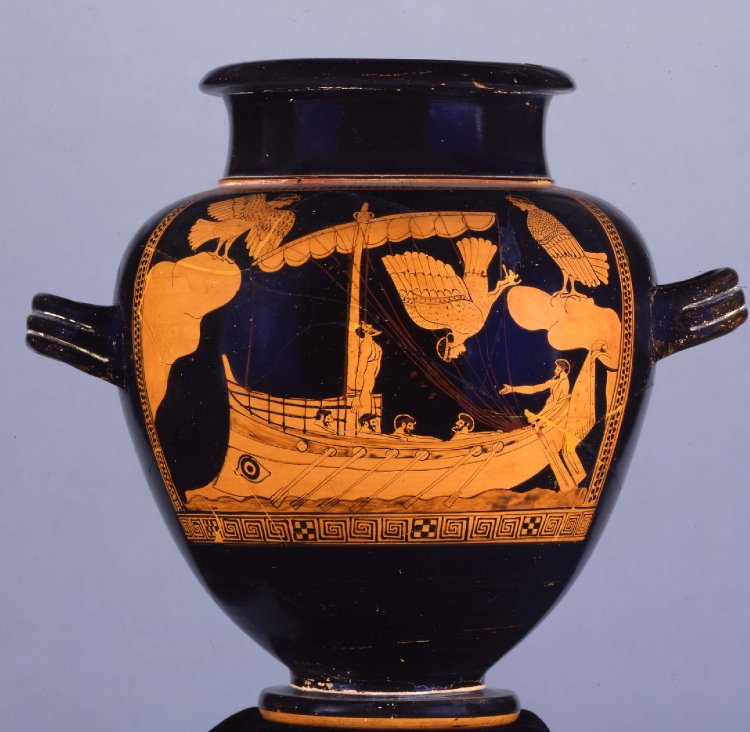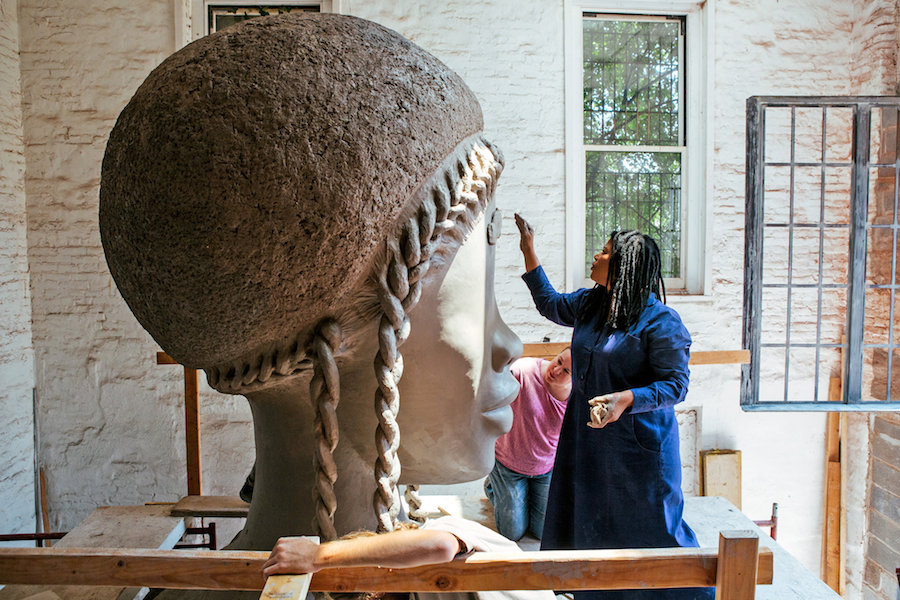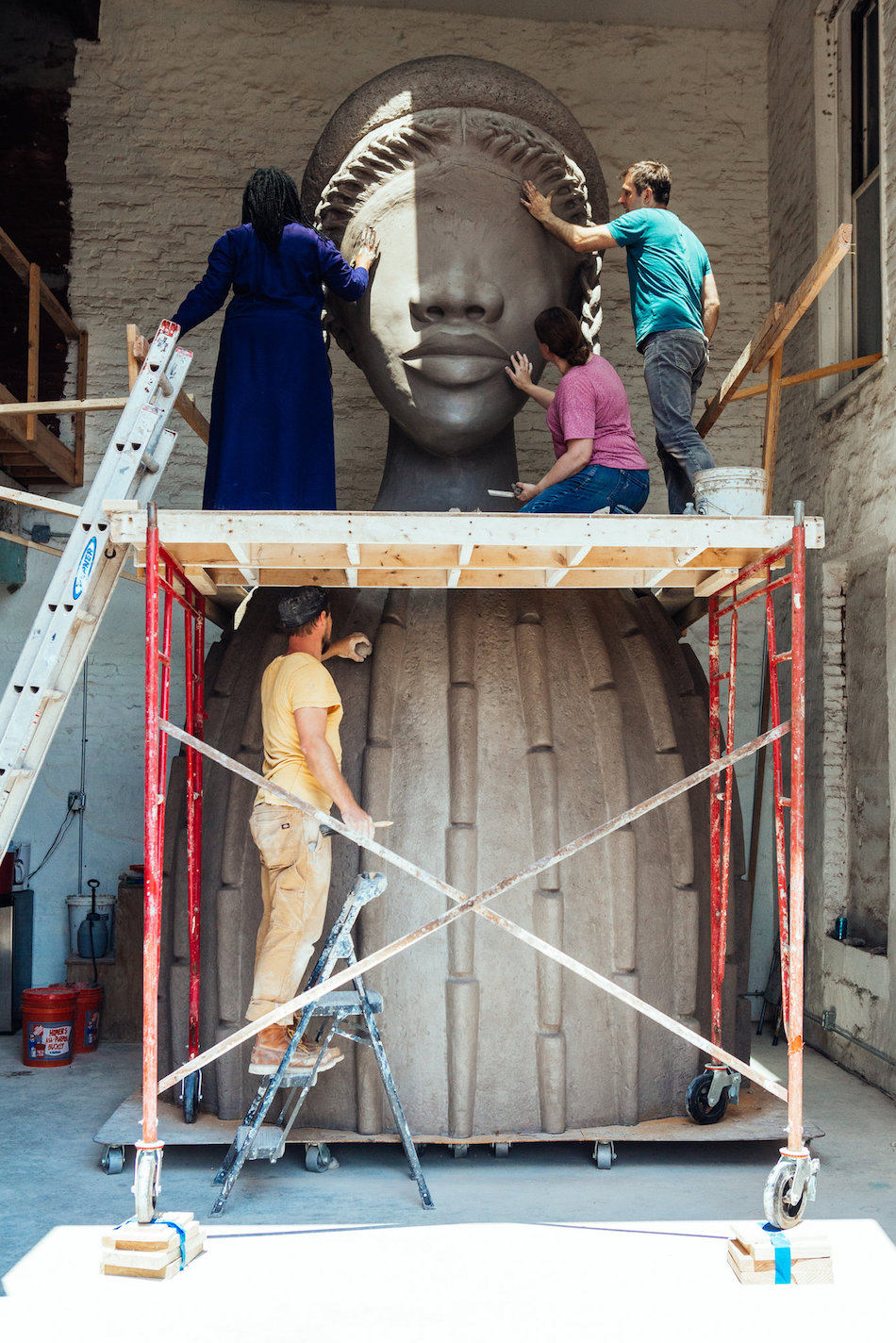Welcome to NewsFile, our round-up of newsy tidbits and happenings from the world of contemporary ceramic art and contemporary ceramics. We launch this edition with the winner of the prestigious Hugo Boss prize.
Cannupa Hanska Luger Wins MAD’s Inaugural Burke Prize

The New York Times reports New Mexico-based artist Cannupa Hanska Luger is the winner of the inaugural Burke Prize for contemporary craft, the Museum of Arts and Design announced Tuesday. The prize constitutes a cash award of $50,000.
Hanska Luger’s (Mandan-Hidatsa-Arikara-Lakota) work addresses environmental matters and issues of violence against indigenous populations, especially those who identify as female, queer or transgender. On display and adjudicated during the The Burke Prize 2018 exhibition is Hanska Luger’s monumental ceramic beadwork installation Every One (2018), which is a commemoration of mission and murdered Native women and girls.
As First American Art writes, the work first appeared at Ent Center for Contemporary Art at the University of Colorado as part of the artist’s Lazy Stitch exhibition.
[He] put out a call for people from across the United States and Canada to create handmade clay beads using instructions he provided. For months, people across both countries worked individually and in groups to create 4,000 beads. On May 3, the beads were unveiled in their final form.

“Every One.” Collaborative ceramic installation by Cannupa Hanska Luger. Photo: Celine Wallace.

Hanska Luger on the December/January 2018 cover of American Craft
MAD writes:
The Burke Prize is named for Marian and Russell Burke, two passionate collectors of craft and longtime supporters of MAD. The prize is an unrestricted award of $50,000 given to a professional artist under the age of forty-five working in glass, fiber, clay, metal, and/or wood. The finalists of the Burke Prize were selected by a jury of professionals in the fields of art, craft, and design based on the artists’ highly accomplished work, strong use of materials, innovative processes, and conceptual rigor and relevance.
Read more about Cannupa Hanska Luger here.
Clay Maven Simone Leigh wins $100K Boss Prize
Ceramic artist Simone Leigh has been awarded the Hugo Boss prize. Administered by the Solomon R. Guggenheim Foundation, the biennial prize recognizes achievement in contemporary art, celebrating the work of remarkable artists whose practices are among the most innovative and influential of our time.
From the jury:
“Leigh has consistently expanded the possibilities of ceramics, which is her principal medium and one that has long been undervalued within the mainstream art world. We are particularly compelled by Leigh’s longstanding and unwavering commitment to addressing black women as both the subject of and audience for her work.”
At 50, Leigh has explored the experiences and social histories of black women through the ceramic tradition for 25 years, and as The New York Times reports, her nomination and subsequent receipt of the distinction signifies a cultural shift where black women are being acknowledged as aesthetic leaders, according to Rashida Bumbray, a curator who has worked closely with Leigh.
“It feels like a moment, but it is really just that the wool has been lifted from everyone’s eyes.”
According to The New York Times, since October of last year, when she won the Studio Museum in Harlem’s Wein Artist Prize, she’s been checking off firsts.
November: The first time one of her pieces sold at a major auction, at Sotheby’s. December: She was shortlisted for the Guggenheim’s 2018 Hugo Boss prize. On Sept. 8, she opens her first significant solo New York gallery show, at Luhring Augustine. And she has been selected as the inaugural winner of the High Line’s new series of large-scale commissions, which will be unveiled in April.
Leigh says being dismissed by the art world for so long offered her an unexpected opportunity––to hone her creativity.
“I was told by everyone I knew in ceramics there was no way I would ever be included in the contemporary art space.”
Leigh is the 12th artist to receive the biennial Hugo Boss prize, which is named after its fashion company sponsor. The distinction carries an award of $100,000 as well as a solo exhibition at the Guggenheim in April 2019.
Read more here.
With this Pot Shard!
This call to action was originally posted to Facebook by potter activist Ayumie Horie. Ostracon is also the name for our critical writing publication:
With this pot shard, I CAST YOU OUT! Potters, join me in sending ostracons to your least favorite politicians. o your most disappointing politicians.
With this pot shard, I CAST YOU OUT! Potters- join me in sending ostracons to your least favorite politicians. “An ostracon is a potsherd—the archaeological term for a historic or prehistoric fragment of pottery broken off from an earthenware pot—that has writing scratched into the surface. In Classical Athens, when a member of society was being exiled, citizens would cast their votes by writing the person’s name on a shard of pottery. Once the votes were counted and when the results were unfavorable, the person was banished from the city for 10 years, ultimately giving rise to the term ‘ostracism.'” .
While it’s symbolic, it’s also meaningful. I know Susan Collins isn’t up for reelection here in Maine, but her complicity and participation in the fraud that is Brett Kavanaugh’s tenure, makes me furious. When @a_n_k_ceramics DMed me yesterday about ostracons and democracy, I thought why don’t we potters all collectively get together and take a stand? Fire one up and put a stamp on it but not before graffitoing the address on, i.e. 1600 Pennsylvania Ave, Washington, DC 20500 if you’d like it to go to you know who.
World’s Oldest News

The Siren Vase
A discovery of epic proportions, the IRL ship featured on a centuries-old Greek vase may have been located in the Black Sea. The Siren Vase, housed at the British Museum, depicts the hero of Homer’s epic poem The Odyssey tied to the mast of his ship as it passes the singing Sirens, c|net reports.
It dates to around 480 B.C. to 470 B.C. For the first time, scientists have discovered a real, intact ship just like the one on the Siren Vase. It’s a stunning find.
The Greek trading vessel is the oldest known intact shipwreck in the world.
Read the article here.

Stay tuned as we update this NewsFile with the latest from the world of contemporary ceramic art and contemporary ceramics. Love or loathe these tidbits from the world of contemporary ceramic art and contemporary ceramics? Share your thoughts in the comments section below.




I notice the peculiar and dismissive term “clay dauber” has disappeared from the headline here and Simone Leigh is instead called a “clay maven.” Why another unusual term — “maven,” which recognizes her expertise but not her creative imagination? what’s the obstacle to using the obvious phrase, celebrated “ceramic artist”?
Language is plastic. Ceramic artists limits the fact that she is a multi-media artists.
” Claydobber” is a peculiar term to apply to an artist who makes sculpture with clay, glaze, and fire. Never heard it before. I wonder what Simone’s take is on this label?